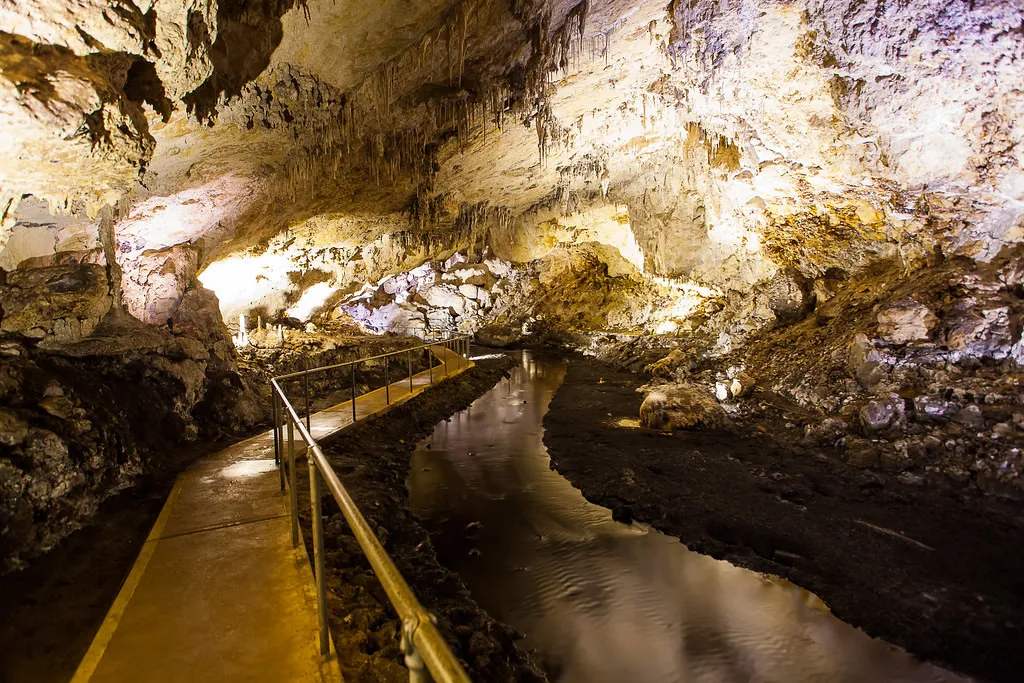The Mammoth Cave National Park is located in the state of Kentucky; It has the world's largest network of natural caves and underground passageways, which are characteristic examples of limestone formations . The park and its underground network of more than 560 km of surveyed passages are home to a varied flora and fauna, including a number of endangered species. The place was included in the list of World Heritage Sites by UNESCO in 1981.
 |
| Mammoth Cave National Park |
The Colossal Cave National Park or Mammoth Cave (Mammoth Cave National Park) is a national park in central Kentucky, comprising parts of the Colossal Cave (Mammoth Cave), the most extensive cave system in the world.
Since 1941 this intricate cave system was declared a National Park, became a World Heritage Site in 1981 and was finally recognized as a Biosphere Reserve in 1990, due to the great biological wealth it houses.
The Mammoth Cave is a calcareous cavern that has about 500 kilometers of galleries (some sources speak of about 600 kilometers) at five different heights. It is the longest known cave system in the world and its underground currents form the Green River.
 |
| Mammoth Cave National Park |
At the deepest level, about 110 meters below the surface, runs the underground river "Eco" (Echo river), a tributary of the Green, which has a length of more than a kilometer and a maximum width of 60 meters in some of the lagoons that it forms.
The underground rivers of the Mammoth Cave are inhabited by endemic terrestrial and aquatic cave animals such as mollusks, arthropods, vertebrates, spiders, giraffes, crayfish and various species of blind fish. The vast majority of these species are usually albino and lacking eyes, which reminds me of another habitat that I was lucky enough to know, closer, the Jameos del Agua in Lanzarote.
The temperature inside the cave remains almost constant at 12.2 ºC. The subterranean postcards that we find inside the Mamut cave are very varied, due to the different geological evolutions over the centuries.
 |
| Mammoth Cave National Park |
In some parts of the cave, crystals of calcite, gypsum and other precipitated minerals cover the rock formations creating striking landscapes of surreal stony dreams, while the dripping of time is heard in every corner.
Mammoth Cave National Park and the Green River Valley attract millions of visitors every year who come to explore the more than 600 kilometers of caverns and intricate mazes that gave this park its name: Mammoth. And to get lost in the surface of the park, with many other attractions.
It is estimated that the first human beings who crossed the entrance arch to the caves did so about 4000 years ago, before the arrival of Europeans to the continent. There are archaeological remains of native settlers from prehistoric times. In 1835 the mummified body of a man from pre-Columbian times was found.
The Mammoth cave was "rediscovered" in 1798. In the course of the Anglo-American War of 1812, "the Rotunda", which is how the great chamber of the main cave is known, was explored, not with an eagerness to discover, but in search of potassium nitrate to make gunpowder.
As a dark curiosity, one of its last explorers, already in the 20th century, spent more than ten years trying to make the map of the caves and in search of hidden treasures. He died in an accident in the cave.